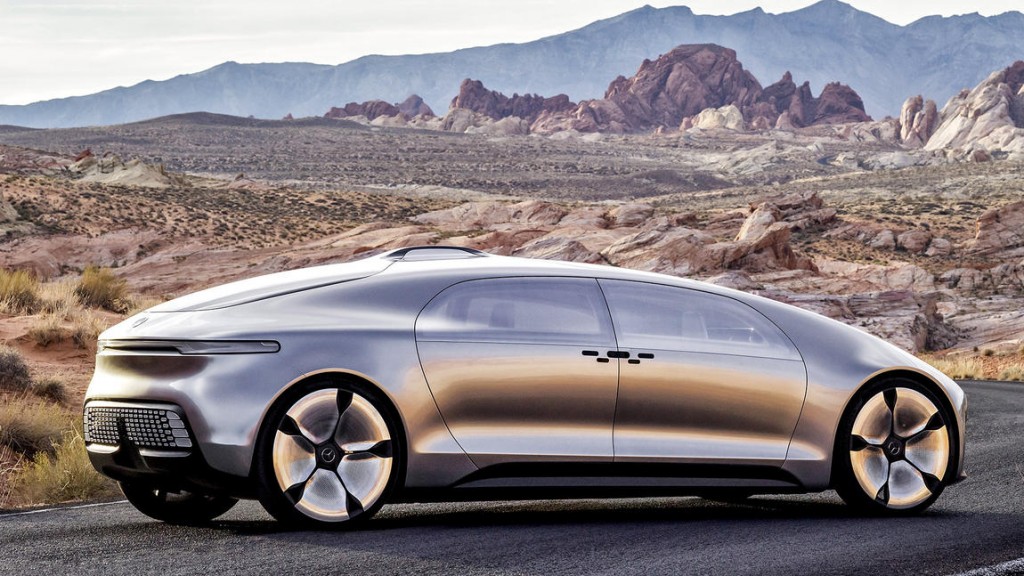Unlike some far-off, airborne fantasy, driving cars are a reality and companies like Google are making sure we’ll see them populating our roads in the not-too-distant future. Google has been developing its driverless car technology since 2009, although the concept isn’t new. The first driverless vehicles as we conceive of them today appeared in the 1980s, although people have been tinkering with the concept of guided cars since the 20s. Big corporate players like Mercedes-Benz, Uber, Bosch, Nissan, General Motors, Google, and now even Apple have since entered the market in the past thirty years.
Possibly the most well-known and most-documented race to the self-driving car is that of Google’s. Early this week, it was reported that one of Google’s driverless cars had been involved in its first accident with injuries. The car — and therefore, the technology — wasn’t at fault, though; the vehicle had been rear-ended by a distracted driver, causing the three Google employees inside to sustain whiplash. Despite this being the first accident involving human injuries, Google driverless cars have been no stranger to accidents. Since testing began six years ago, these vehicles have been involved in 14 documented accidents. Google’s car was found to be at fault in exactly zero of those accidents, funnily enough.
That’s pretty astounding, and it paves the way for the question: what benefits do these vehicles possess that aren’t already available in our current, boring driver-necessary cars? Well, for one: safety. As has been demonstrated through Google’s many test trials, driverless cars are subject to fewer traffic accidents. This is due to a self-driving car’s ability to monitor happenings all around itself, in contrast to a human driver’s partial situational awareness. Driverless cars utilize 360 degrees of view, RADAR and LIDAR (basically, radar that uses light), as well as numerous other instruments. Self-driving cars are also free from the human errors caused by tail-gating and road rage. It goes without saying that you’ll never see a driverless car flip you off on the freeway and attempt to run you off the road.
Autonomous vehicles could also ease speed limits, meaning a world in which use of these cars was increased would be a world in which you’d spend much less time traveling to your destinations. Traffic congestion on both streets and freeways would be all but eliminated, as self-driving cars eliminate the necessity of safety gaps and can manage the flow of traffic more effectively than human drivers.
For those Friday nights spent downtown, self-driving cars would also eliminate the need for designated drivers and ride-sharing services. DUIs would become a thing of the past. Instead of waiting outside a party for your ride, simply hop in your driverless car and get home in no time. You wouldn’t even need to pull over to throw up. And without the need for a person to drive the car, there would no longer be a need for driver’s licenses, or even minimum driving ages. In theory, a twelve-year-old could take a seat in a driverless car and head to school without any parent needed. Perhaps most exciting of all, without a traditional steering wheel and driver interface set-up, in-vehicle cabins can be arranged in new and unusual ways! Now, I’m not expecting anything similar to the bridge of the Starship Enterprise, but riding in a car where all passengers can face each other would be pretty sweet.
So when will you be able to take a ride on down to your local dealership and pick up your own self-driving car? Not for awhile, unfortunately. Public opinion about this new technology is pretty disappointing; only 12 percent of respondents in a recent survey say they trust a computer-operated vehicle. Without a high consumer demand, we may not see driverless cars for another few years – even a decade, at the latest. But companies are optimistic: Google expects to put its vehicles on the market by 2018. Audi is a bit more ambitious, planning for its next-gen Audi A8 to be capable of completely autonomous driving in 2017. Will we ever live in a world where human-operated cars are a thing of the past? Well, sure: but probably not in our lifetimes. According to the Institute of Electrical and Electronics Engineers, experts estimate up to 75 percent of vehicles will be driverless in 2040.
So while we’re still waiting for our pill-form meals and flying cars and – I dunno – jetpacks… we’ll be getting our taste of the future fairly soon. They might as well just combine all those concepts while they’re at it. Flying, pilotless cars with nitrous oxide and on-board, pill-form foods? Yes, please.


























